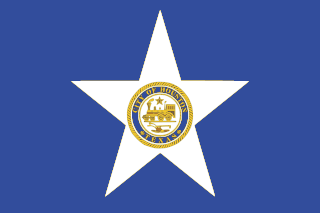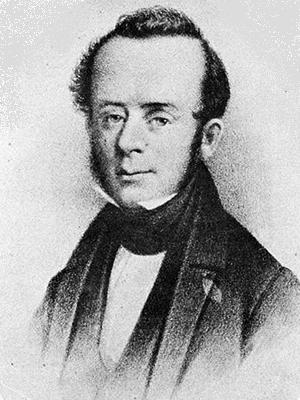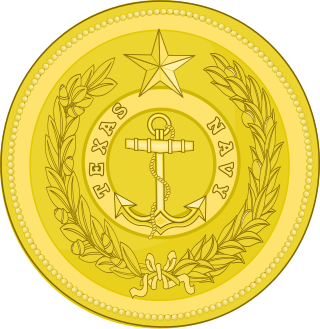
The city of Houston in the U.S. state of Texas was founded in 1837 after Augustus and John Allen had acquired land to establish a new town at the junction of Buffalo and White Oak bayous in 1836. Houston served as the temporary capital of the Republic of Texas. Meanwhile, the town developed as a regional transportation and commercial hub. Houston was part of an independent nation until 1846 when the United States formally annexed Texas. Railroad development began in the late 1850s but ceased during the American Civil War. Houston served the Confederacy as a regional military logistics center. The population increased during the war and blockade runners used the town as a center for their operations.
Timeline of historical events of Houston, Texas, United States:

The Houston Ship Channel, in Houston, Texas, is part of the Port of Houston, one of the busiest seaports in the world. The channel is the conduit for ocean-going vessels between Houston-area terminals and the Gulf of Mexico, and it serves an increasing volume of inland barge traffic.

John Kirby Allen, was a co-founder of the city of Houston and a former member of the Republic of Texas House of Representatives. He was born in Canaseraga Village, New York. He never married. He died of congestive fever on August 15, 1838, and was buried at Founders Memorial Cemetery in Houston, Texas.

The Texas Navy, officially the Navy of the Republic of Texas, also known as the Second Texas Navy, was the naval warfare branch of the Texas Military Forces during the Republic of Texas. It descended from the Texian Navy, which was established in November 1835 to fight for independence from Centralist Republic of Mexico in the Texas Revolution. The Texas Navy, Texas Army, and Texas Militia were officially established on September 5, 1836 in Article II of the Constitution of the Republic of Texas. The Texas Navy and Texas Army were merged with the United States Armed Forces on February 19, 1846 after the Republic of Texas became the 28th state of the United States.

The Texan schooner Brutus was one of the four ships of the First Texas Navy (1836–1838) that during the Texas Revolution wreaked havoc on towns along the coast of Mexico, blockaded Mexican ports, and captured ships bound for Mexico with goods and munitions of war.
The Texas schooner Invincible was one of the four schooners of the Revolutionary Texas Navy (1836-1837). She began her service in January 1836 and immediately began attacking ships supplying the Mexican army in Texas, including capturing the United States merchant vessel Pocket and later the British ship Eliza Russell. Both of these actions caused diplomatic incidents between the Republic of Texas and the United States and the United Kingdom.

The Texan steamship Zavala was a Texas Navy ship in Texas' second Navy after the Texas Revolution. She was the first steamship-of-war in the Texas Navy.

Launched in 1850, Lot Whitcomb, later known as Annie Abernathy, was the first steam-powered craft built on the Willamette River in the U.S. state of Oregon. She was one of the first steam-driven vessels to run on the inland waters of Oregon, and contributed to the rapid economic development of the region.

John Austin Wharton was distinguished Texian statesman, lawyer, and soldier. He served as Adjutant General at the Battle of San Jacinto. In a eulogy at his grave, Republic of Texas President David G. Burnet said of him, "The keenest blade on the field of San Jacinto is broken." He died a bachelor on December 17, 1838, while serving as a member of the Texas Congress. His nephew, John A. Wharton, who would go on to be a Confederate Army general, was named for him.

Telegraph and Texas Register (1835–1877) was the second permanent newspaper in Texas. Originally conceived as the Telegraph and Texas Planter, the newspaper was renamed shortly before it began publication, to reflect its new mission to be "a faithful register of passing events". Owners Gail Borden, John Pettit Borden, and Joseph Baker founded the paper in San Felipe de Austin, a community long at the center of Texas politics. The first issue was printed on October 10, 1835, days after the outbreak of the Texas Revolution. The Telegraph continued to report news of the war and the formation of the new Republic of Texas through the end of March 1836. As the Mexican Army approached the colonies in eastern Texas, most residents fled eastward. The owners of the Telegraph and their printing press evacuated on March 30 with the rear guard of the Texian Army. The press was quickly reestablished in Harrisburg. On April 14, Mexican soldiers captured the printing press and threw it into Buffalo Bayou.

The Texian Navy, also known as the Revolutionary Navy and First Texas Navy, was the naval warfare branch of the Texian armed forces during the Texas Revolution. It was established by the Consultation of the Republic of Texas on November 25, 1835. Along with the Texian Army, it helped the Republic of Texas win independence from the Centralist Republic of Mexico on May 14, 1836 at the Treaties of Velasco. It was replaced by the Texas Navy on March 23, 1839.

Samuel May Williams was an American businessman, politician, and close associate of Stephen F. Austin, who was an Anglo-American colonizer of Mexican Texas. As a teenager, Williams started working in the family's mercantile business in Baltimore. He spent time in South America and New Orleans, fleeing the latter because of debts. He landed in Mexican Texas in 1822, having learned French and Spanish. Stephen F. Austin hired Williams for his colony in 1824. Williams first worked as a clerk, and later assumed the title of secretary to the ayuntamiento, a local government established for the colony by the Mexican state of Coahuila and Texas. He worked for Austin for about a decade.

Liberty was a sternwheel steamboat that was operated on the Coquille River and then on Coos Bay from 1903 to 1918. Liberty was notable for having its ownership entangled in various legal claims in the early 1910s, including some involving a colorful North Bend, Oregon business promoter Lorenzo Dow "Major" Kinney (1855-1920).

Thomas Freeman McKinney was a trader, merchant, and a co-founder of Galveston, Texas. Living with his family in the western states of Kentucky, Illinois, and Missouri, he started trading in Mexico in 1823. The next year he settled in Stephen F. Austin's Colony, claiming a headright to Texas land while continuing his trading activities. He established a partnership with Samuel May Williams in 1834, and they operated a warehouse at the mouth of the Brazos River. The McKinney & Williams partnership loaned money and vessels to the cause of Texas independence. After Texas gained independence from Mexico, McKinney co-founded Galveston, Texas, and the McKinney & Williams company set up a warehouse and dock in the new town. McKinney later sold his share of the McKinney & Williams partnership and retired to Travis County, Texas.

Emma Hayward commonly called the Hayward, was a steamboat that served in the Pacific Northwest. This vessel was once one of the finest and fastest steamboats on the Columbia River and Puget Sound. As newer vessels came into service, Emma Hayward was relegated to secondary roles, and, by 1891, was converted into a Columbia river tow boat.

Racer's hurricane was a destructive tropical cyclone that had severe effects in northeastern Mexico, the Republic of Texas, and the Gulf Coast of the United States in early October 1837. It was named after the Royal Navy ship HMS Racer, which encountered the cyclone in the northwestern Caribbean. Termed "one of the most famous and destructive hurricanes of the century" by meteorology historian David Ludlum, the storm first affected Jamaica with flooding rainfall and strong winds on September 26 and 27, before entering the Gulf of Mexico by October 1. As the hurricane struck northern Tamaulipas and southern Texas, it slowed to a crawl and turned sharply northeastward. The storm battered the Gulf Coast from Texas to the Florida Panhandle between October 3 and 7. After crossing the Southeastern United States, it emerged into the Atlantic shipping lanes off the Carolinas by October 9.

Constitution is a former steamboat which operated in the Republic of Texas.

Columbia is former steamship owned by the New York and Charleston Steam Packet Company, and built no later than 1835. This was the first coastal steam packet in the United States. The steamer was also the first of the Charles Morgan Line.
Houston Direct Navigation Company operated ships on Buffalo Bayou between 1866 and 1927. It had had two antecedent companies with similar subscriber lists and management: the Houston and Galveston Navigation Company, and the Houston Navigation Company.

















